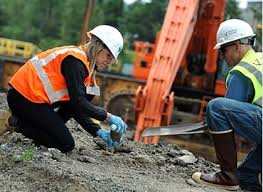Introduction:
Contaminated sites pose a significant threat to public health and the environment, often resulting from past industrial activities, improper waste disposal, or accidental spills. Addressing these environmental hazards requires a multidisciplinary approach, with civil engineers playing a crucial role in the remediation process. In this blog, we’ll delve into the essential functions that civil engineers fulfill in the remediation of contaminated sites, highlighting their expertise, methodologies, and contributions to environmental stewardship.
Understanding Contaminated Site Remediation:
Contaminated site remediation involves the identification, assessment, and cleanup of pollutants to mitigate risks to human health and the environment. Civil engineers leverage their expertise in various fields, including environmental engineering, geotechnical engineering, and hydrology, to develop comprehensive remediation strategies tailored to the specific site conditions and contaminants present.
Key Roles of Civil Engineers:
1. Site Assessment and Characterization:
Civil engineers conduct detailed site assessments to determine the extent and nature of contamination. This involves collecting soil, groundwater, and air samples, performing geophysical surveys, and analyzing data to identify contaminant sources, pathways, and receptors. Through site characterization, engineers gain valuable insights into the site’s geology, hydrogeology, and environmental conditions, laying the foundation for effective remediation planning.
2. Remedial Design and Engineering:
Based on the findings of the site assessment, civil engineers develop remedial action plans that outline the most appropriate techniques and technologies for cleanup. This may include excavation and removal of contaminated soil, in-situ treatment of groundwater, soil vapor extraction, bioremediation, or the installation of engineered barriers such as containment systems or soil caps. Engineers employ principles of chemistry, biology, and physics to design and implement remediation systems that efficiently target and eliminate contaminants while minimizing environmental impact.
3. Regulatory Compliance and Permitting:
Navigating the regulatory landscape is a critical aspect of contaminated site remediation. Civil engineers work closely with regulatory agencies at the local, state, and federal levels to ensure compliance with environmental regulations and permitting requirements. This involves preparing technical reports, permit applications, and remediation plans, as well as facilitating communication between stakeholders to obtain approvals and permits necessary for remediation activities.
4. Monitoring and Quality Assurance:
Throughout the remediation process, civil engineers oversee monitoring and quality assurance measures to track the effectiveness of cleanup efforts and ensure compliance with project goals and regulatory standards. This may involve installing monitoring wells, sampling groundwater and soil, conducting air quality monitoring, and analysing data to assess progress and make informed decisions regarding remedial actions.
5. Stakeholder Engagement and Communication:
Effective communication and collaboration are essential components of successful remediation projects. Civil engineers engage with stakeholders, including property owners, community members, regulatory agencies, and environmental advocacy groups, to address concerns, provide updates on project progress, and solicit feedback. By fostering transparency and building trust, engineers facilitate constructive dialogue and promote community involvement in the remediation process.
Case Study: Love Canal Remediation
One of the most infamous cases of contaminated site remediation is the Love Canal in Niagara Falls, New York. In the late 1970s, civil engineers led efforts to address widespread contamination stemming from chemical waste buried beneath a residential neighbourhood. Through a combination of excavation, containment, and groundwater treatment, engineers successfully remediated the site, safeguarding public health and demonstrating the pivotal role of engineering in environmental protection.
Conclusion:





